
Newar or Newari, known officially in Nepal as Nepal Bhasa, is a Sino-Tibetan language spoken by the Newar people, the indigenous inhabitants of Nepal Mandala, which consists of the Kathmandu Valley and surrounding regions in Nepal.

Newar or Nepami, are the historical inhabitants of the Kathmandu Valley and its surrounding areas in Nepal and the creators of its historic heritage and civilisation. Newars form a linguistic and cultural community of primarily Indo-Aryan and Tibeto-Burman ethnicities following Hinduism and Buddhism with Nepal Bhasa as their common language. Newars have developed a division of labour and a sophisticated urban civilisation not seen elsewhere in the Himalayan foothills. Newars have continued their age-old traditions and practices and pride themselves as the true custodians of the religion, culture and civilisation of Nepal. Newars are known for their contributions to culture, art and literature, trade, agriculture and cuisine. Today, they consistently rank as the most economically and socially advanced community of Nepal, according to the annual Human Development Index published by UNDP. Nepal's 2011 census ranks them as the nation's sixth-largest ethnicity/community, with 1,321,933 Newars throughout the country.
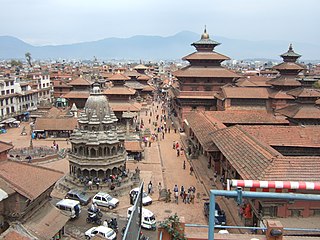
Lalitpur Metropolitan City is a Metropolitan city and fourth most populous city of Nepal with 299,843 inhabitants living in 49,044 households per 2021 cencus. It is located in the south-central part of Kathmandu Valley, a large valley in the high plateaus in central Nepal, at an altitude of 1,400 metres.

Shukra Raj Shastri was a Nepalese intellectual and fighter for democracy who was executed by the autocratic Rana dynasty. He is one of the four martyrs of the Nepalese revolution that toppled the Rana regime. The other three are Dashrath Chand, Dharma Bhakta Mathema and Ganga Lal Shrestha.
Jog Meher Shrestha was a well known Nepalese politician, belonging to the Rastriya Prajatantra Party and he was one of the founder members of RPP. He was politically active during the Panchayat period and served as minister of Home Affairs, Panchayat and Land Reforms, Health and Water Resources, Law and Justice, Education and Communication, Panchayat and Local Development and Land Reforms. Notably, Mr. Shrestha served as the Home Minister during the referudun which took place in May 1980. Mr. Shrestha was appointed Land Reform and Management Minister leading RPP in the coalition government led by Sher Bahadur Deuba in 2004.

Little Angels' School is a private school system based in Hattiban, Lalitpur District of Nepal, Kathmandu. It offers schooling, A-Levels and +2 facilities, and education up to the SEE.

Queen Tripurasundari, also known as Lalit Tripura Sundari Devi, was a Queen consort of Nepal by marriage to King Rana Bahadur Shah of Nepal. Widowed at a very young age and childless, she served as regent of the kingdom for a long period. She was regent for her stepson Girvan Yuddha Bikram Shah in 1806-1819, and for her step-grandson Rajendra in 1819-1832. She was the first woman to publish literature in Nepal.
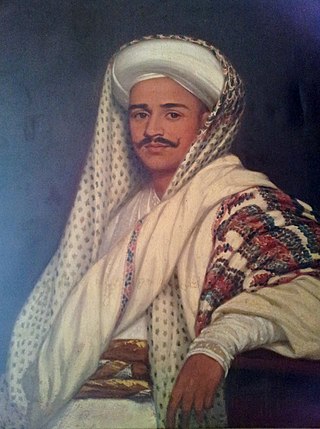
Ranga Nath Poudyal Atri popularly known as Ranganath Pandit was the Mukhtiyar of Nepal from 1837 December to 1838 August and in 1840 November for about 2–3 weeks. He was the first Brahmin Prime Minister of Nepal.

The Ministry of Energy, Water Resources and Irrigation is a governmental body of Nepal that governs the development and implementation of energy including its conservation, regulation and utilization. It furthermore develops operates electricity projects including hydropower projects. Due to the importance of water resources in Nepal, the ministry focuses on the development and utilization of hydropower. In 2018, under the second Oli cabinet, the portfolio of the ministry was enlarged and the portfolios of Water Resources and Irrigation was added to the then Ministry of Energy, while the Ministry of Irrigation was discontinued.

Udaya Shumsher Rana Nepali: उदय शमशेर राणा is a Nepali politician and a youth leader who served as a Minister of State for Finance from 2017 to 2018. He was the president of Nepal Tarun Dal (NTD) a sister and youth organization of Nepali Congress from 2012 to 2017. He is currently working as a Central Working Committee Member of Nepali congress.
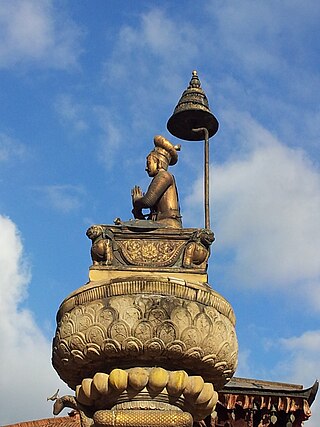
The Śreṣṭha or is the second largest Newar caste group, occupying around 21% of overall Newar population, or about 1.1% of Nepal’s total population. It is believed that the word Srēṣṭha is derived from the Newar word Śeśyah, which itself is derivation of a Sanskrit word Sista meaning 'noble', although literal meaning of the word also translated to 'best or important.' "Shrestha" itself was later adopted as the specific family surname by members of this high-caste Hindu group, although there are over 50 other recognized surnames of Srēṣṭhas. Despite their numerically low national population, their high-status and socio-economic capital puts Śreṣṭhas amongst the most socio-economically privileged and politically over-represented segments of Nepali population.

The Upper Tamakoshi Hydroelectric Project is a 456 MW peaking run-of-the-river hydroelectric project in Nepal. It is the largest hydroelectric project in Nepal, operating since July 2021. It is sited on the Tamakoshi River, a tributary of the Sapt Koshi river, near the Nepal–Tibet border.

Bidya Devi Bhandari is a former Nepali politician who served as the second president of Nepal from 2015 to 2023. She formerly served as the minister of defence and minister of environment and population.
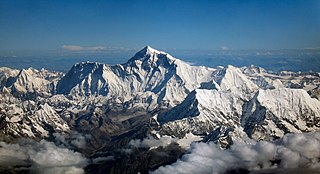
Koshi Province कोशी प्रदेश is the autonomous easternmost province adopted on 20 September 2015 by Constitution of Nepal. The province is rich in natural resources, tourist attractions, recreational activities, and natural beauty. The province covers an area of 25,905 km2, about 17.5% of the country's total area. With the industrial city of Biratnagar as its capital, the province covers other major eastern towns including Birtamod, Birat Chowk, Damak, Dharan, Itahari, Triyuga and Mechinagar and includes several mountains including the Everest, Kangchenjunga, and Ama Dablam. Koshi River, the largest river of the nation, is the province's western boundary. Understanding of the first-past-the-post voting system issued by the Constituency Delimitation Commission, Nepal, the province hosts 28 parliamentary seats and 56 provincial assembly seats.
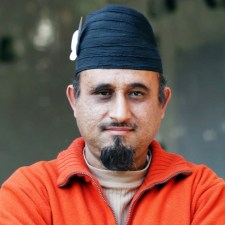
Ujwal Thapa was a Nepali youth leader and activist, entrepreneur, and social worker. He was the president of the Bibeksheel Nepali party.
Anup Raj Sharma was the Chief Justice of Nepal from 11 February 2010 to 25 March 2010. He was preceded by Min Bahadur Rayamajhi and succeeded by Ram Prasad Shrestha. He was appointed chairperson of the National Human Rights Commission (NHRC) in 2014.
Padam Sundas is a Nepalese social worker and activist for Dalit communities in Nepal. Known as the "Guardian of the Dalits", Sundas has published a number of short stories, poems, and articles related to social justice and political reform. He has published two books of his own and over 25 books written by writers from Dalit and non-Dalit communities with the help of Ratna Maya Dalit Sahitya Samrakshan Samiti, of which he is a trustee.

Peter John Karthak was a Nepalese writer, musician and journalist. He wrote two novels, several poems and short stories and edited and wrote for multiple newspapers in his life. He is best known for his Sajha Puraskar–winning novel, Pratyek Thau: Pratyek Manchhe.

Dr. Toshima Karki is a Nepali politician, a doctor by profession and member of Rastriya Swatantra Party. Dr. Karki is a former Minister of State for Health Ministry of Nepal. She was elected to the House of Representatives in 2022 from Lalitpur 3.
















